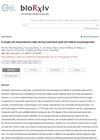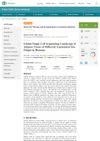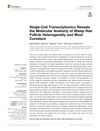Search
for
Did you mean single-cell transcriptomics?
Learn
5 / 8 resultslearn Osteopontin
signaling protein that, when suppressed, may grow hair by reducing inflammation and stem cell loss
learn Epidermal Growth Factor
learn Follistatin
glycoprotein that inhibits TGF-β and promotes hair growth by antagonizing activin
learn Thymosin Beta 4
Research
5 / 1000+ results
research A Single-Cell Transcriptome Atlas During Cashmere Goat Hair Follicle Morphogenesis
The research mapped out the cell types and molecular processes involved in developing Cashmere goat hair follicles.

research Global Single-Cell Sequencing Landscape of Adipose Tissue of Different Anatomical Site Origin in Humans
Different parts of the body's fat tissue have unique cell types and characteristics, which could help treat chronic wounds.
research Interpretation Of The Yak Skin Single-Cell Transcriptome Landscape
The study mapped yak skin cells to understand hair growth better.

research Single-Cell Transcriptomics Reveals the Molecular Anatomy of Sheep Hair Follicle Heterogeneity and Wool Curvature
The research identified genes that explain why some sheep have curly wool and others have straight wool.

research Single-Cell Chromatin Landscapes of Mouse Skin Development
The study maps how genes are regulated during mouse hair growth.
Community Join
5 / 1000+ resultscommunity UPDATE: The theory that explains everything. Please help me make this big!
Hair loss theory involves 3alpha-hydroxysteroid reductase (3AHD) converting DHT to androstenol. Discussion explores potential treatments and encourages more research.
community Polydopamine Synergizes with Quercetin Nanosystem to Reshape the Perifollicular Microenvironment for Accelerating Hair Regrowth in Androgenetic Alopecia.
A quercetin-encapsulated and polydopamine-integrated nanosystem (PDA@QLipo) shows promise for treating androgenetic alopecia by reshaping the perifollicular microenvironment, outperforming minoxidil in hair regeneration. The nanosystem promotes cell proliferation, hair follicle renewal, and recovery by scavenging reactive oxygen species and enhancing neovascularity.
community Scientists May Have Accidentally Found a Way to Reverse Hair Loss Without Drugs
2-deoxy-D-ribose is being explored as a hair loss treatment but is not proven effective in humans and may be costly and inconvenient. Minoxidil remains the most effective treatment.
community Natural sweetener Stevia found to turbocharge male pattern baldness treatment: Mice given Stevia patch had 18 times better absorption of minoxidil and hair coverage of 67.5% in bald areas after just 35 days.
Stevia microneedles increased minoxidil absorption and hair growth in mice. The conversation humorously questions the applicability of these results to humans.

community Compressed part of research of theory of androgenic/anabolitic balance. AGA h-responders analytic. Theory of physio-metabolitic method of anti AGA treatment
The treatment for androgenetic alopecia involves using finasteride and minoxidil with intense exercise and cold exposure to boost metabolism and reduce androgenic effects, potentially leading to hair regrowth. This approach may activate biological pathways for improved hair and overall health.